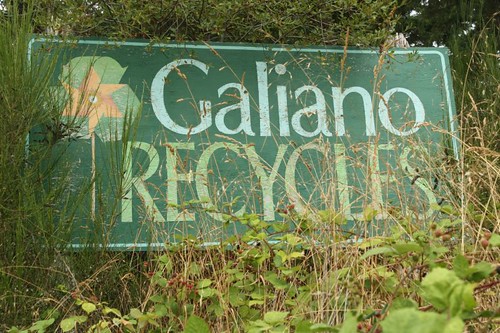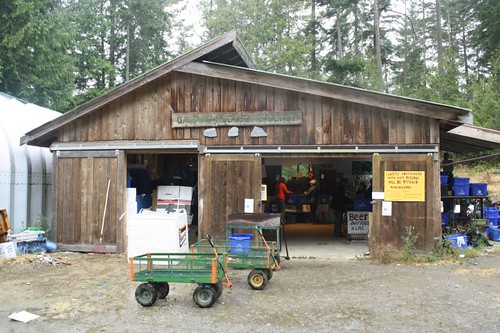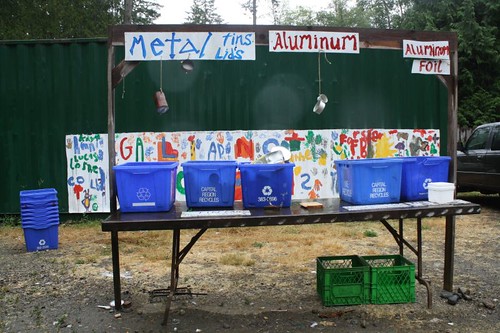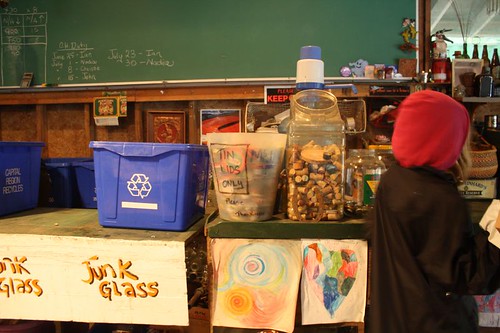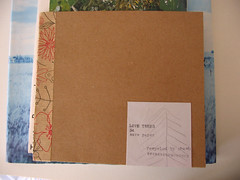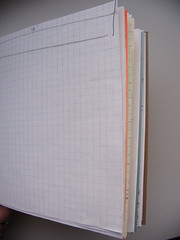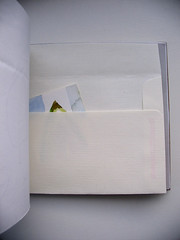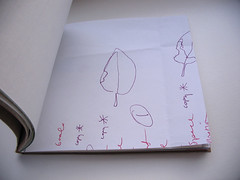
i'd like to welcome another guest poster to sew green!
kyra . she commented on a post a while back and we began chatting - once i found out what she did for a living i asked if she'd want to write a guest post for us. and lucky for us she said YES. she's also an amazing photographer - as her
flickr stream will attest. with out further ado - here's kyra's post ::
With the long weekend coming up and summer swimming by ever so quickly, the time is ripe to tackle a few of those household projects. While you’re making plans, here are a few ways to ensure a healthy and conscious home.
o Visit an architectural salvage yard. Not only are you reducing demand on the myriad resources required for harvesting, manufacturing, packaging and transportation, these treasures are often a huge bargain and offer unique character to your space. *Don’t forget your tape measure and a thorough list of needs, or you will likely be so overwhelmed with the assortment of pretty elements that you will forget what you came for {like me}.
o Think local. For all the same reasons that you try to eat locally grown food, you should look for locally harvested and manufactured materials. Consider what types of resources have a local industry and make sure that your products actually come from there. Great candidates to look for include concrete, brick, stone, wood, tile, and even carpet if you’re in the Southeast United States. This does get tricky with a few materials known particularly for their sustainability, such as bamboo and cork. While bamboo has a great green reputation, remember that it is traveling a very long distance to arrive in the US.
o Ask yourself how long it will take for a product to regenerate. This is partially where the aforementioned bamboo and cork get their fine reputations. They can grow a new product in ten years or less. Other great examples are sisal, wool, cotton, and agriboards. Agriboard are composite wood-like products made form agricultural byproducts such as wheatboard, sunflower board, Dakota burl and
Kirei {so lovely}! In addition to their rapid renewability, these each add a soft natural elegance to any atmosphere.
o Seek products containing
recycled materials . Do you sort your recyclables at home? Take advantage of the next link in the chain! Decking, cotton and cellulose insulation, ‘pop-bottle’ carpet, and glass tile are common products, and don’t forget about structural steel, concrete, brick, roofing and even drywall that likely utilize post-consumer waste as well.
o Don’t forget to insulate. Among the many, many measures to take for conserving energy {see the tip of the iceberg below}, proper insulation is key. Any opportunity you get to stuff some extra buffer in any wall space, take it. Look for cracks around windows and doors and pay attention to drafts and seal them with caulking to reduce air leakage.
Cotton and
cellulose insulation are two great non-toxic, sustainable insulations that won’t leave you itchy, coughing, and are made of rapidly renewable and recycled materials. If you are adding new exterior walls,
structurally insulated panels (SIPS) and
insulated concrete forms (ICFs) offer a preferable alternative to wood studs and insulation. SIPS are a core of foam insulation sandwiched between two layers of oriented strand board and ICFs are a combination of polystyrene foam and concrete. Both offer more uniform coverage and go up in a jiffy (pick your pro wisely).
o High Performance in a nutshell. Essentially this means utilizing efficiency to the max. It’s important to incorporate these concepts early in your design. If you truly are starting fresh from the ground, orient your home to take advantage of the sun’s energy (also known as passive solar). Use high performance windows, solar panels, energy efficient lighting (fixtures and bulbs), appliances, and choose low-flow faucets and
toilets . Opt for light colors when replacing a roof, walkway, driveway, or other solid groundcover to lessen heat absorption.
o Clean air inside and out: did you know that despite strict air quality regulations for the outside atmosphere, there are none for interior air quality?! Adhesives, sealants, paints, plastics, and composite materials among others can off-gas at room temperature, releasing harmful toxins into the air. These off gases are commonly referred to as volatile organic compounds (VOCs). Thanks to industry improvements, a plethora of alternatives exist which are considerably healthier. Some labels volunteer the VOC content of their products right on the packaging but many do not. For complete information, ask for a Material Safety Data Sheet (MSDS) or research the product online. The lower the VOC content the better; solvent-free, water-based and formaldehyde free are good catch phrases indicating some reduction in chemical content (but always read the rest of the label!). If a manufacturer will not disclose the information, there is probably a reason. ,
Greenseal is a great website listing many products who have earned their approval for acceptable components. Watch closely for urea-formaldehyde in composite wood and other agriboard products. Phenol formaldehyde is less likely to off-gas at room temperature but if you can avoid it, do.
Overall, it’s about making decisions that work well with your project. Planning is essential, and it’s good to know that some products may not be readily available at your local hardware store and they may need to order it for you (and you should hound them until they do). Two favorite reference books of mine are Prescriptions for a Healthy House by
Paula Baker Laporte , Erica Elliott, and John Banta and
Green Remodeling by David Johnston and Kim Master. Now sit back and enjoy your new space with a smile!
-- Kyra is a sustainability consultant living and working in the beautiful Front Range of Colorado. When not assisting design teams with creating environmentally sound structures, she is either making things or playing outside. thanks kyra!!
 She's a fibre freak (since I don't really know her except from shopping in her store, I hope she won't mind me calling her that) who is constantly creating new things from old. Clothes, bags, belts and accessories - all from recycled fabrics and yarn. Plus she crochets. And her inspiration is her mom. How nice is that?
She's a fibre freak (since I don't really know her except from shopping in her store, I hope she won't mind me calling her that) who is constantly creating new things from old. Clothes, bags, belts and accessories - all from recycled fabrics and yarn. Plus she crochets. And her inspiration is her mom. How nice is that?

